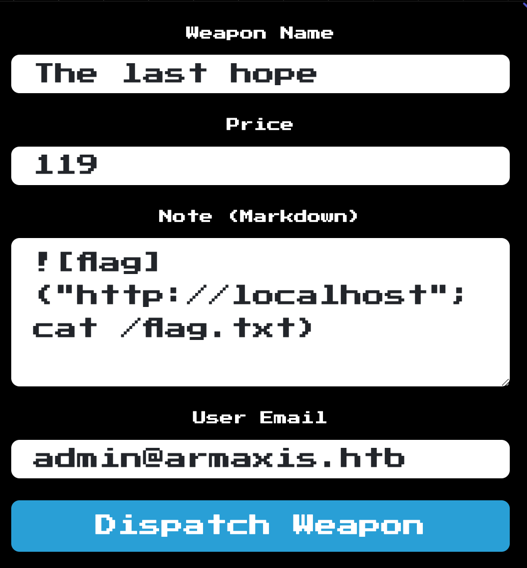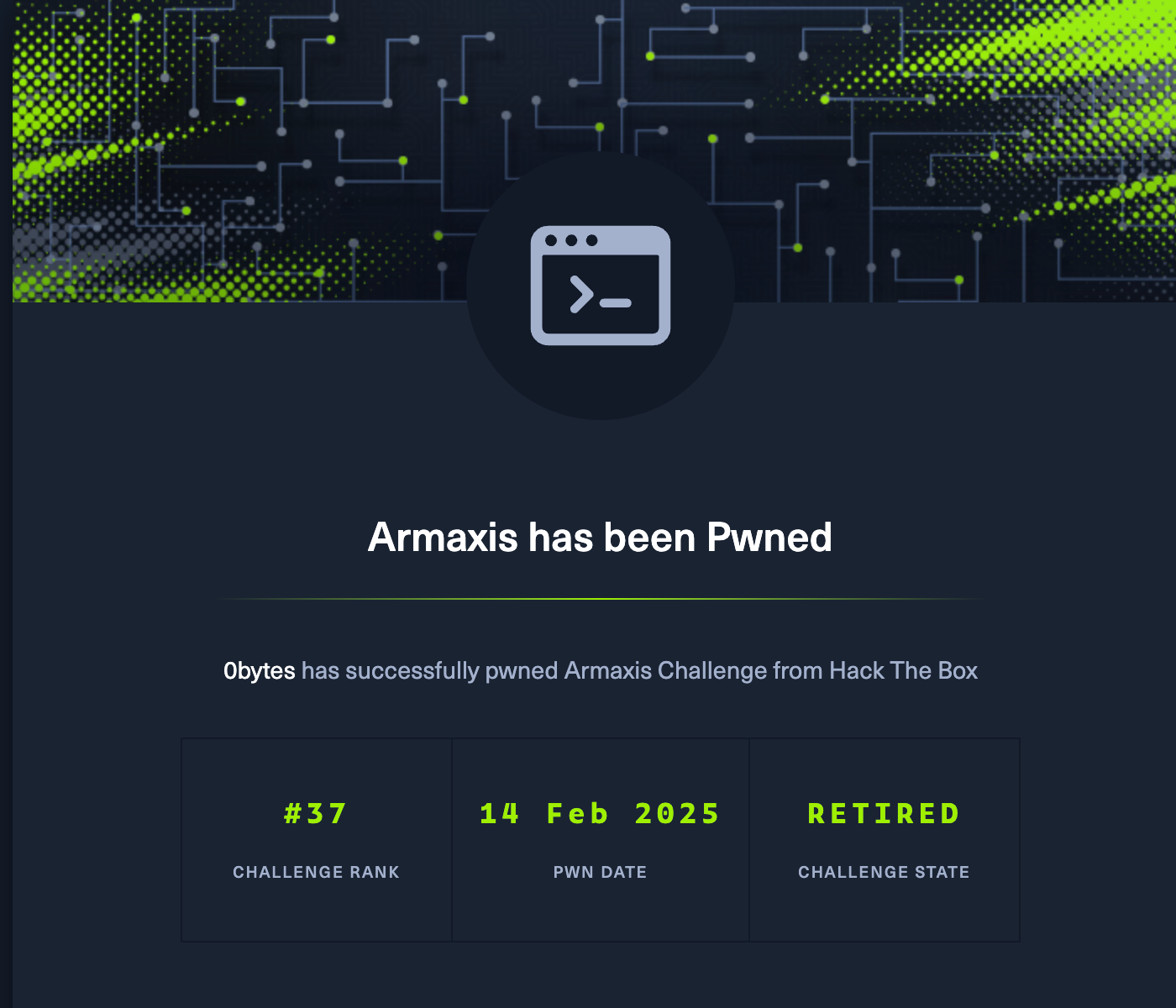Challenge description
In the depths of the Frontier, Armaxis powers the enemy’s dominance, dispatching weapons to crush rebellion. Fortified and hidden, it controls vital supply chains. Yet, a flaw whispers of opportunity, a crack to expose its secrets and disrupt their plans.
Challenge overview
The Armaxis challenge presents a web application that includes an email service and a markdown-based content rendering feature. The objective is to identify and exploit vulnerabilities to gain administrative access and retrieve the flag.
Initial Reconnaissance
The provided Dockerfile reveals that the application runs two primary services:
- Web Application: Handles user interactions and administrative functions.
- MailHog (Mail Inbox): Captures outgoing emails, primarily for password reset functionality.
- The application exposes two ports:
8080(email service) and1337(web application).
Code Review
Web Application Vulnerabilities
1. Command Injection in Markdown Rendering
The parseMarkdown function in markdown.js uses execSync to fetch external images, allowing command injection:
const MarkdownIt = require('markdown-it');
const { execSync } = require('child_process');
const md = new MarkdownIt({
html: true,
});
function parseMarkdown(content) {
if (!content) return '';
return md.render(
content.replace(/\!\[.*?\]\((.*?)\)/g, (match, url) => {
try {
const fileContent = execSync(`curl -s ${url}`);
const base64Content = Buffer.from(fileContent).toString('base64');
return `<img src="data:image/*;base64,${base64Content}" alt="Embedded Image">`;
} catch (err) {
return `<p>Error loading image: ${url}</p>`;
}
})
);
}
module.exports = { parseMarkdown };This function executes a curl command on any provided URL, enabling remote code execution (RCE) when properly exploited.
2. Password Reset Vulnerability
The /reset-password endpoint allows password resets without verifying that the token corresponds to the correct email address:
router.post("/reset-password", async (req, res) => {
const { token, newPassword, email } = req.body;
if (!token || !newPassword || !email)
return res.status(400).send("Token, email, and new password are required.");
try {
const reset = await getPasswordReset(token);
if (!reset) return res.status(400).send("Invalid or expired token.");
const user = await getUserByEmail(email);
if (!user) return res.status(404).send("User not found.");
await updateUserPassword(user.id, newPassword);
await deletePasswordReset(token);
res.send("Password reset successful.");
} catch (err) {
res.status(500).send("Error resetting password.");
}
});This flaw allows an attacker to reset any user’s password, including the administrator’s.
3. Hardcoded Administrator Email
The database.js file reveals that the admin account is initialized with the email admin@armaxis.htb:
await runInsertUser(
"admin@armaxis.htb",
`${crypto.randomBytes(69).toString("hex")}`,
"admin",
);This information is useful for targeting an admin account during exploitation.
Exploitation
1. Reset Admin Password
- Create a New Account: Register using the email
test@email.htb. - Request a Password Reset: Trigger a password reset for this account.
- Retrieve Reset Token: Access the MailHog inbox to obtain the reset token.
- Modify the Request: Intercept the reset request and change the email to
admin@armaxis.htb, successfully resetting the admin password.
2. Command Injection via Markdown Parsing
With admin access:
- Access the Admin Panel: Navigate to the
/weapons/dispatchpage. - Inject Malicious Markdown Payload:md


- Retrieve and Decode the Flag: The base64-encoded flag appears in the
srcattribute of an embedded image.

3. Decoding the Flag
Using base64 -d to decode:
echo "SFRCe0ZBS0VfRkxBR19GT1JfVEVTVElOR30K" | base64 -dHTB{FAKE_FLAG_FOR_TESTING}With the fake flag retrieved, we can use the same technique to get the real flag on the HTB server.

